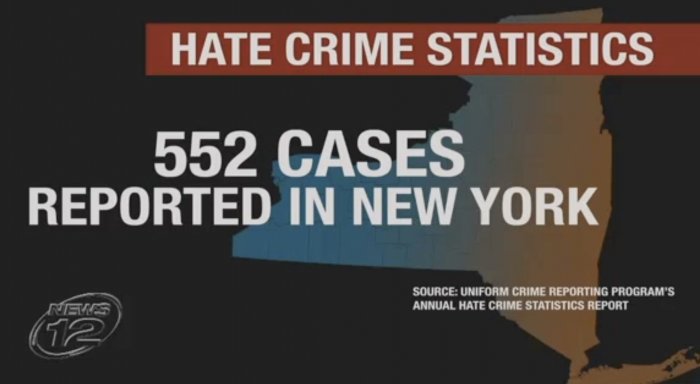
Editor’s note: This is one in a series of case studies on collaborations that involve local TV news, still the top source and most trusted type of news for Americans. Only about 7 percent of collaborations in the Center for Cooperative Media’s database includes partnerships with local TV stations — like this one.
Check in over the next few days to see how national, regional, and local partners are teaming up with TV news directors and investigative journalists to harness shared resources through collaborations with local TV news: what works, what doesn’t, and what this means for the future of local news and collaborations.
 Local TV is still the most trusted source of news. So how do you collaborate with a station?How News 12 is working with ProPublica’s Documenting Hate database to track local hate crimesHow Your Voice Ohio worked with Youngstown’s WFMJ to highlight solutions in the opioid crisisHow Mississippi Today and WLBT balance data and broadcast needs while co-investigating stories
Local TV is still the most trusted source of news. So how do you collaborate with a station?How News 12 is working with ProPublica’s Documenting Hate database to track local hate crimesHow Your Voice Ohio worked with Youngstown’s WFMJ to highlight solutions in the opioid crisisHow Mississippi Today and WLBT balance data and broadcast needs while co-investigating storiesBut it’s often ProPublica’s ongoing, longer-term collaborations or those centered around a particular event that bring in local TV stations — not necessarily deeper investigations or republication relationships that stem from partnerships with Frontline, NPR, Vox, or even CBS News.
ProPublica’s Electionland and Documenting Hate are two clear examples of very specific partnerships that brought in a swath of teammates — including, surprise surprise, local TV journalists. Electionland was its coordinated effort to track polling place integrity and voter suppression issues throughout the country. (I still flinch when I think about all of its logistics.) Documenting Hate, launched after the 2016 election, tracks the rise in hate crimes around the country. “It’s useful to have reach across mediums because they have very different audiences. I think for a project of this size, where we have 160 national and local newsrooms around the country, I think the big thing we want is geographic coverage,” said Rachel Glickhouse, Documenting Hate’s partner manager. She helps recruit partners at the beginning, onboard new ones joining along the way, and flag tips from ProPublica’s incident database for geographically appropriate partners — along with a host of other things she’s detailed for us before. But they don’t necessarily look (or not look) for local TV partners: “We would approach places that look like they are working on these issues,” she said.Tara Rosenblum, a senior investigative reporter at the New York-area cable news station News 12, heard about Documenting Hate after meeting Glickhouse at a conference a year and a half or so ago. “We had noticed anecdotally, in our local markets, just a stunning rise of hate crimes, especially against some of the Jewish populations here in New York,” she said. News 12’s management “tasked me with putting a microscope on the problem.”
News 12 aired a story about its first steps with Documenting Hate, asking viewers to submit tips through a ProPublica form on the News 12 website — directing them where to find the form online, a crucial step. “Getting things on air will reach the audience you’re looking to reach. Getting things online is important so people can find the work later,” Glickhouse said.
TV news stations are known for ruthless competition — and ProPublica embraces collaboration. All the tips from all partners’ forms go into a central database and Documenting Hate operates through a first-come, first-serve basis to preserve story originality. (The risk of overlap is low — it’s unlikely News 12 would need a tip that an outlet from, say, Arizona took first.) But Rosenblum said one of the strongest tips that led to good visual storytelling actually came from someone who had heard about Documenting Hate from PBS, so getting the word out more broadly can actually increase the odds that the collaborators will get the tips they need.
Beyond the tips, Rosenblum finds ProPublica’s free data training and weekly email update contextualizing the project in other regions particularly useful. She said those bonuses, the list of other notable news organizations participating, and a face-to-face meeting in ProPublica’s New York City office, easily secured News 12 leadership’s support for its first collaboration of this kind.
Rosenblum is crafting a story from her yearlong reporting process to air in the spring, illustrating shifts in hate crimes locally. She’s built up a database of more than 400 incidents using ProPublica’s tips and FOIA requests from seven counties. Now comes the tough part for many TV stories: finding the visual angle that works.
“With the new landscape in American media, to do really substantive worthwhile journalism, partnerships like this are the wave of the future,” Rosenblum said. “We’re all on the same team.”